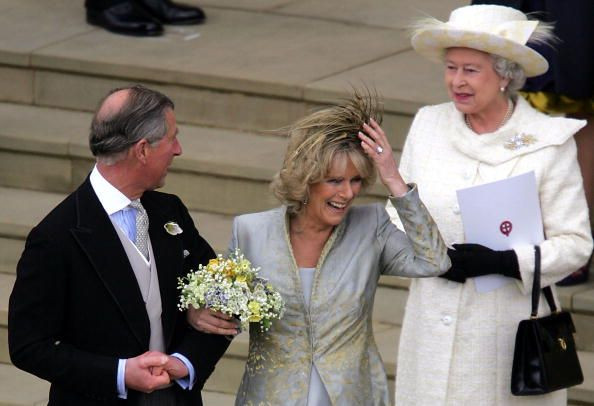Queen Elizabeth Prioritized Royal Duty Over Prince Charles, Camilla's Civil Wedding Ceremony

Queen Elizabeth II prioritized her royal duty over Prince Charles and Camilla Parker Bowles' civil wedding ceremony.
Prince Charles and Camilla had a low-profile wedding ceremony that was very different from the Prince of Wales lavish royal wedding to Princess Diana. In addition, the Queen didn't attend their civil wedding ceremony because of her royal duties.
According to Francesca Specter, a journalist for Express, Prince Charles and Camilla's wedding was controversial because he was previously married. So, they were obliged to have a civil ceremony.
The Queen reportedly told a friend that her role as head of the church was not compatible with the notion of attending a civil marriage ceremony. So, she opted to skip it.
"The Queen feels she has to put her role with the Church before her role as a mother," a source told The Telegraph in 2005.
Although the Queen was not present at the registrar, she attended the service of blessing at St. George's Chapel at Windsor Castle. However, according to a body language expert, Her Majesty showed displeasure during the ceremony.
"Charles and Camilla's wedding was a more modest affair and there were fewer distress signals on display. Charles has finally married the woman he loves," Dr. Peter Collett said. "But the event is not without its tensions. When the couple emerges there appears to be some indecision about what is going to happen next. Then we see the Queen exposing her tongue."
"This is an unconscious gesture of rejection. It's what we do when we disapprove of something and want symbolically to push it away," the expert explained. "It's a feature the Queen is displeased – either about the arrangement or about the wedding itself."
Although Prince Charles' wedding with Camilla was simpler and had tension, there are more distressing signals during his big day with Princess Diana. In fact, according to Collett, the groom showed gestures of regret.
"At a crucial point, he wipes away his imaginary tears. This is an action that people often perform when they are feeling sad," the expert added. "It suggests that Charles is having deep regrets about what he has got himself into."
Collett also explained that Prince Charles didn't adapt his behavior to Princess Diana. In fact, if one applies the "cut-out principle" and removes Princess Diana in the picture, "it does not look like anyone is missing."
© Copyright IBTimes 2024. All rights reserved.






















